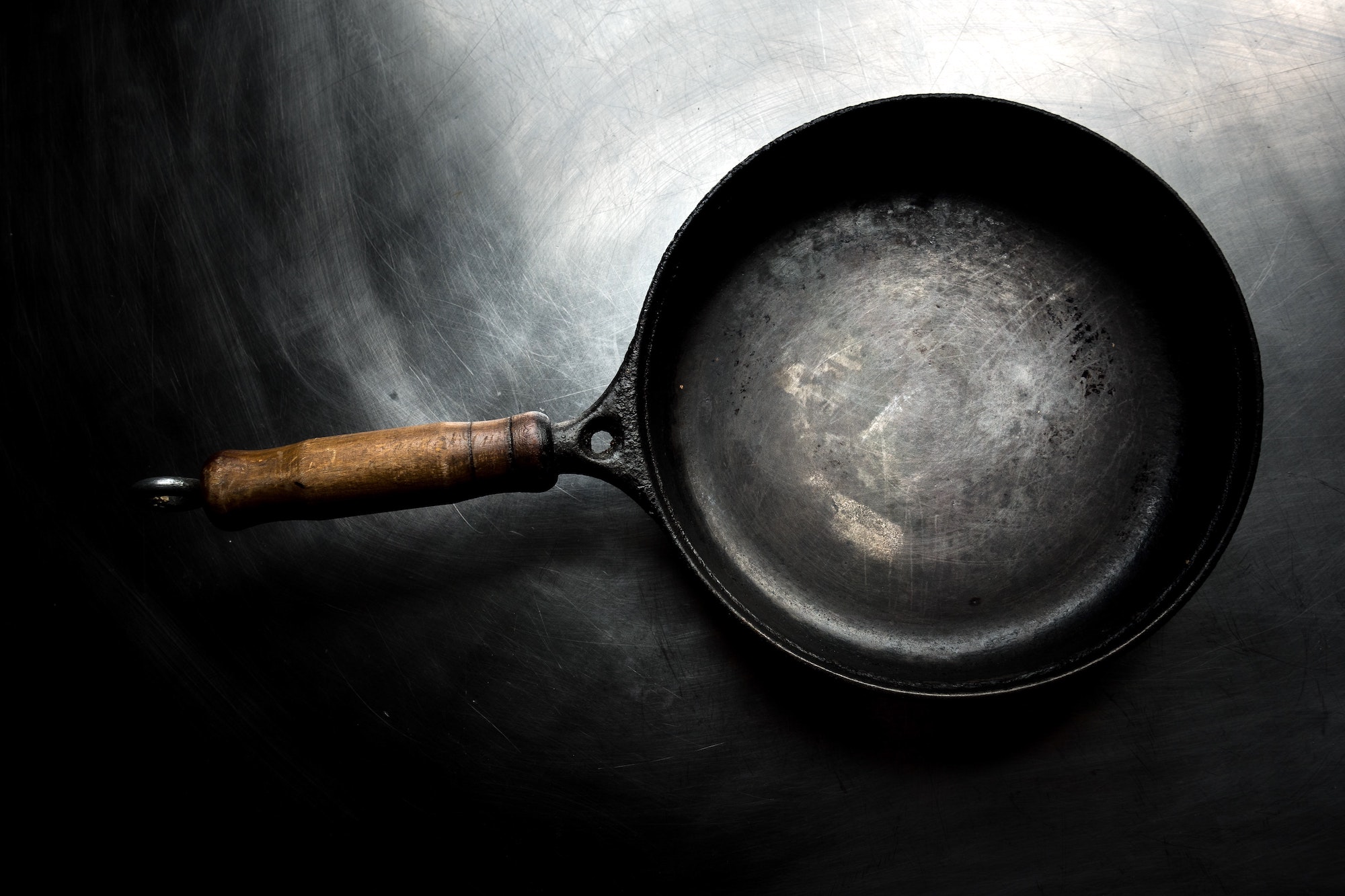Cast-iron cookware occupies a special place in both professional and home kitchens. These dark, durable pans and skillets possess exceptional heat retention properties, making for evenly-cooked food, and cooking experiences free of the usual inconveniences you encounter with most contemporary non-stick pans.
They’re also quite versatile—a standard 12-inch deep cast-iron pot for instance can be used for frying, baking, and even as a soup pot. But for these advantages to last, you need to put in a bit of special work—the kind that other pieces of kitchen equipment don’t normally require. Here are five essential things you need to know about taking care of cast-iron cookware:
1. Season your pan
This special treatment, when done right, is what accounts for a cast-iron pan’s non-stick surface. “Seasoning” means baking into the iron some kind of fat or oil in order to create a non-stick coating. So the more you use your pan, the more seasoned it will become. But besides frequent usage, there is a proper seasoning procedure:
- In an oven preheated to 300°F, place a sheet of foil on the bottom rack and your pan on the top rack. Leave the pan inside the oven for 10 minutes.
- Using a paper towel or a piece of cloth coated with a tablespoon of shortening or lard, smear the surface of the pan. Make sure you don’t use vegetable oil, as it creates an unpleasant, sticky layer.
- Return the grease-coated pan in the oven and heat for another 10 minutes.
- Take out the pan and pour out any excess grease. Turn the pan over and place it back on to the top rack of the oven. Bake for one hour.
- Turn off the oven. Let the pan cool down inside the oven. You can repeat this whole procedure as often as possible to maintain your pan’s seasoning.
To maintain and further solidify the seasoned surface, Epicurious recommends cooking fat-dense foods (like pork chops or bacon) in cast-iron cookware. Also, make sure to never store food in these pans as acids in food can break down the pan’s fatty surface.
2. Wash with soap—but only once
A newly purchased piece of cast-iron cookware can benefit from mild soapy water. But after seasoning, you won’t want to do this again since soap and scouring pads can remove the non-stick surface you’ve worked so hard to create. Running the pan through a dishwasher is of course out of the question.
3. Make sure it’s always clean
Never soak your cast-iron cookware. The proper way to wash it is to run it through hot water and lightly scrub it with a sponge or to remove bits of food remnants. Never use metal brushes to scrub cast-iron pans or skillet. If the cooking residues prove difficult to remove with a sponge, sprinkle a bit of salt into them. With a kitchen towel, scrub the pan or skillet with the salt. Rinse out the food remnants and the salt with hot water.
4. Never leave it out to dry
It’s crucial to keep cast-iron completely dry after washing it. The explanation being that any amount of moisture will cause cast-iron to rust. So after you’ve rinsed the food and salt off your pan, dry it well with a kitchen towel, then place it on the stove-top over low heat. Let it heat for a few minutes. After that, coat the pan with a bit of shortening or lard using a paper towel. Place the pan back on the stove and heat for another five minutes or so. Remove it from the heat; after it cools, make sure to remove the excess grease using a paper towel.
5. Never store it with the lids on
In a dry place, store your cast-iron cookware without the lids on. This helps to avoid rusting, but if in case it rusts anyway, scrub the pan or skillet with steel wool. This might remove some of the seasoning, but you can always just re-season your pan.
Subscribe to our weekly newsletter to receive all the tools and solutions entrepreneurs need to stay updated on the latest news in the industry





